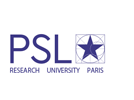Abstract
This essay aims to analyse the ways in which the myth of the Mare nostrum entered into the artistic iconography of the early twentieth century. It was highly amplified during the Fascist regime thanks to some relevant graphic works, monumental commissions and, above all, temporary exhibitions that were characterized by a propagandistic overtone. The representation of a Mediterranean (in fact Italian) common identity became a fundamental part of a pervasive political strategy. The stylistic choices were conditioned both by the need to emphasize the glorious return of “Latinness” and the incardination of the “new” fascist modernity.
Recommended Citation
Roscini Vitali, Aurora. "The Myth of ‘Mare Nostrum’: Themes and Exhibitions, Legacy and Experimentation in the Construction of Mediterranean Fascist Italy." Artl@s Bulletin 10, no. 2 (2021): Article 14.
Included in
Environmental Design Commons, Graphic Design Commons, Interdisciplinary Arts and Media Commons, Painting Commons






